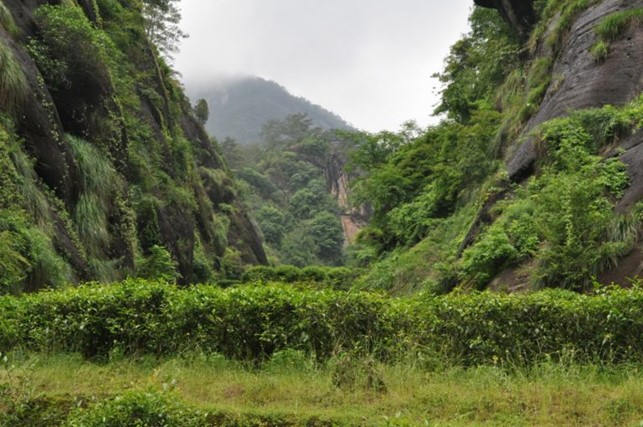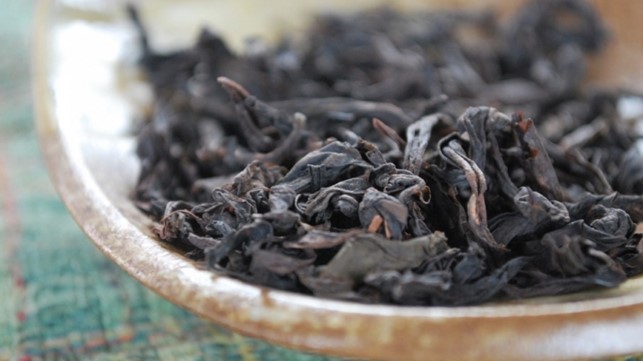“The big red dress” is the literal meaning of one of the most precious and sought after teas ever. Da Hong Pao, a very high quality oolong tea which grows in the Wuyi mountains in the Guangdong region of China. Even today, near the temple of Tian Xin, some of the ancestral bushes of this renowned tea survive.
The Legend of Da Hong Pao
Traditionally, the origin of this name comes from this famous legend. During the Ming Dynasty, a scholar was on his way to take the imperial exam. Unfortunately, along the way he fell ill and was unable to continue on his way. A local monk, in order to alleviate his sufferings, served him an infusion of tea with wonderful healing properties. The scholar was able to recover in time to take his important examination and earn the title of “zhuang yuan”, as well as the imperial robes, a robe of intense red color. To show his gratitude, the scholar went back to visit the monk and together they went to the plantation where the tea came from. Once they arrived in front of the bush, he wrapped his precious red robe around the plant as a sign of gratitude. For this reason Da Hong Pao tea is called the great red robe.
Another legend…
There is also another legend about the origin of the name of this tea, some consider it as a continuation of the previous story, although it is not possible to determine with certainty whether the protagonists of the two stories coincide or not.
According to this second legend, in spite of numerous attempts by the best doctors in China, the emperor’s mother, who had been ill for some time, was in a critical condition. One day a scholar who came to know about her situation tried to offer her a cup. Her health conditions improved in a very unexpected way and the son, in order to show all his joy, ordered his servants to go to the plant that had produced that tea in order to pay homage to it. Once there the servants took off their red habits and hung them on the plant as a sign of respect.
Leaving legends aside, most probably the name was coined by the peasants of that time in order to easily identify a blend of three different types of tea. As for its characteristics, Da Hong Pao is certainly the most exclusive and characteristic Yan tea or rock tea, so much to be reserved in China only to honored guests. In order to satisfy the wishes of emperor Zhu Yuanzhang, its leaves are whole, and not in the traditional pressed form. The production process is substantially the typical one of Oolong teas, with the particularity that tea is processed soon after being harvested and undergoes many phases of twisting and toasting.

The taste is pretty full bodied and persistent with autumnal notes ranging from cocoa to nuts with a slight hint of licorice. The best way to taste it is certainly the infusion in preheated Gaiwan. We suggest a very short first infusion, not more than one minute, with the sole purpose of washing the leaves of the tea. The following infusions will release a less stubborn aroma and definitely more delicate. The particular type of processing makes it a powerful digestive and weakens its exciting properties, while keeping partially unaltered the antioxidant properties.
In order to avoid altering the taste it is good to avoid the addition of lemon, milk, sugar or honey.



